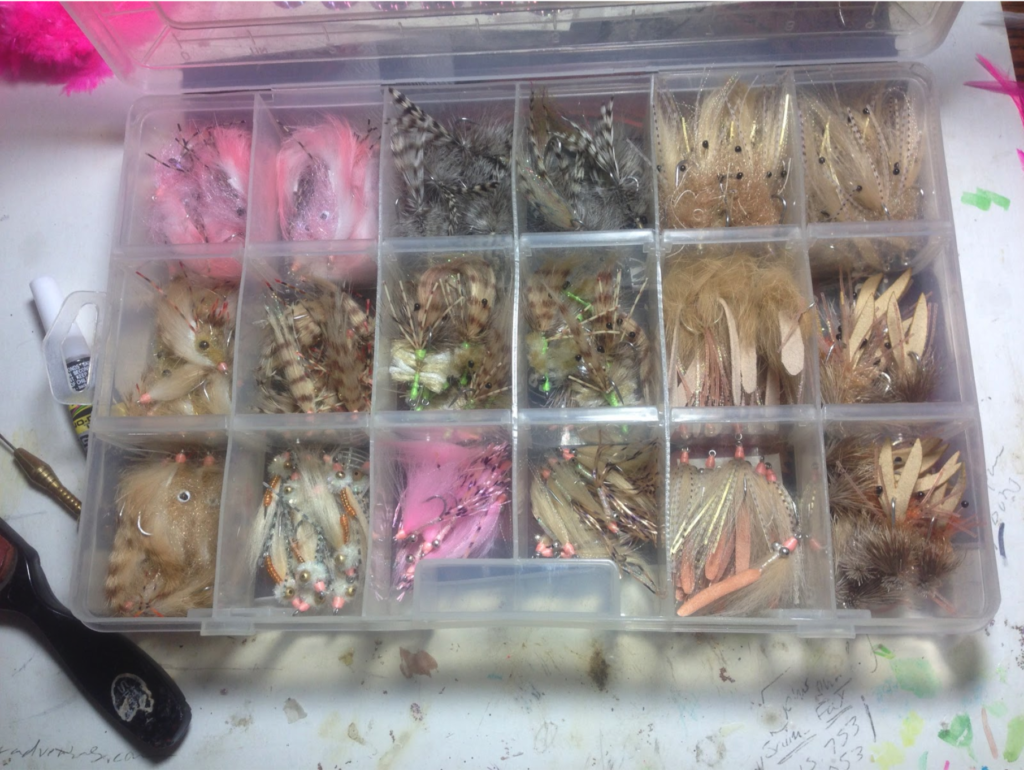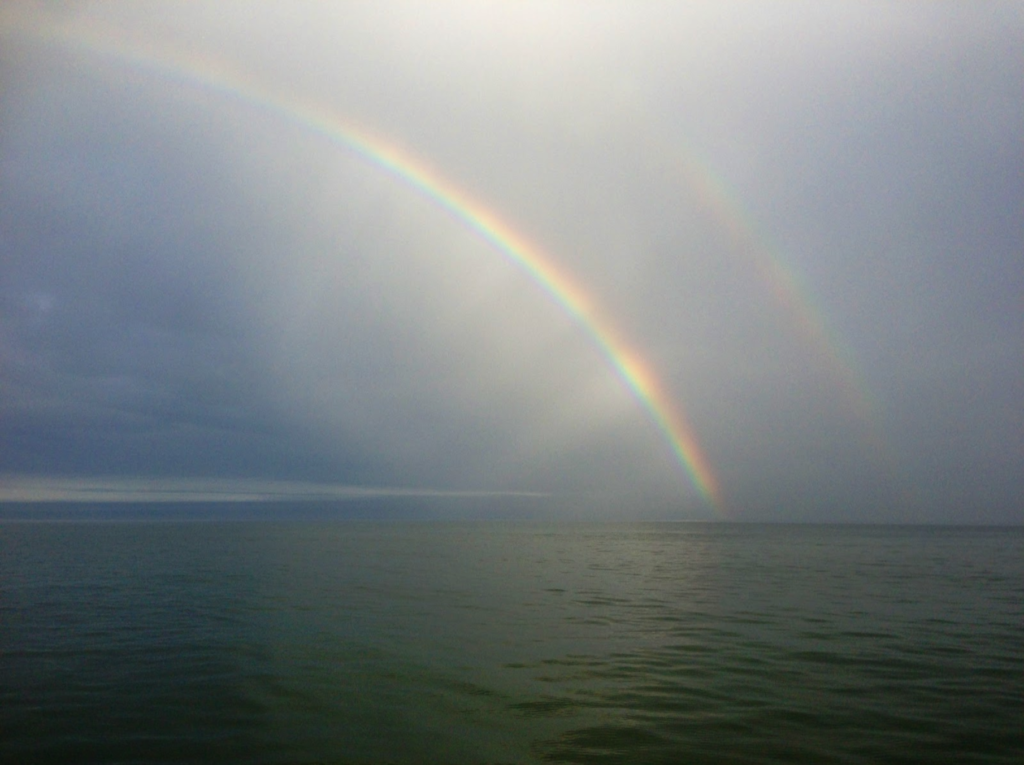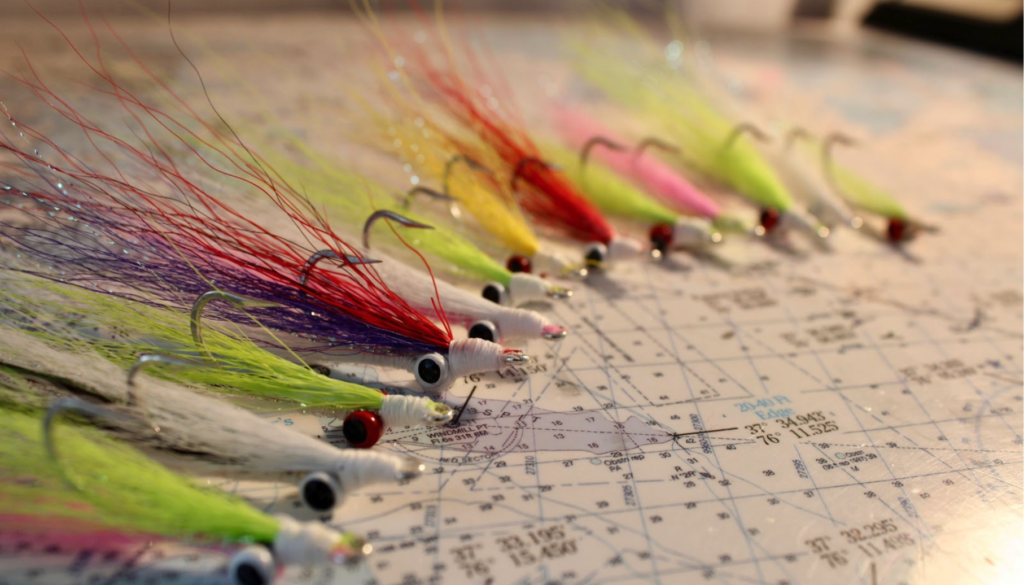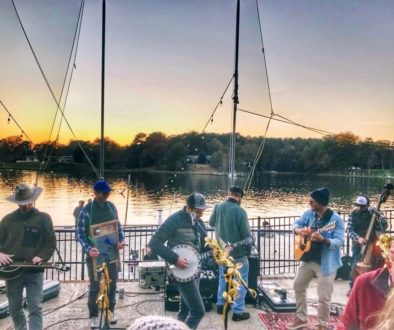Good Fishing and Tight Lines
People are attracted to the Northern Neck and the Middle Peninsula for various reasons. One could be the wide and expansive views of the Chesapeake Bay and its tributaries. Another may be the easy going and relaxed lifestyle the region offers away from the stress and hectic pace of the metro area. The options for cuisine featuring seafood are many, and it is always fresh. These are all true, but what drew me to this area as a full time resident was the fishing. There are many species from which to target, and there are many different methods utilized to catch them all.

Bottom Left to Right: Speckled Trout, Cobia
Let’s focus on my favorite species found in the waters at various times of the year. The first which comes to mind for many would be the striped bass or the rockfish. “Stripers” are found in these waters for much of the year, and the Chesapeake Bay is one of the largest nurseries for these fish. Rockfish are popular for their accessibility and for their fight. They make fantastic table fare. Stripers can be caught by trolling, casting lures, deep jigging and by fly fishing.
The Speckled Trout or “speck” is a member of the drum family and is not to be confused with the trout species found in freshwater. Specks are highly sought after and enjoy a cult-like following, and as such, their locations are often guarded and kept hush. They are typically found in shallow grassy areas or around structure. They can be caught by drifting bait, on artificial lures and by fly fishing. Trout have a very low tolerance for extreme low water temperatures and rapidly changing conditions due to winter weather patterns. Speckled trout are wonderful to eat.

Red Drum or redfish boast a beautiful copper to bronze coloring with a false eye on its tail. The tail can also have a beautiful bright blue accent. They are often found in the same habitat of the speckled trout and can be caught with the same methods. The very large adult drum can be located in the open waters of the Bay in large schools. Their presence in these schools are revealed by an orange glow just below the surface. Red drum are incredibly strong fish. Those 27 inches or smaller make excellent table fare.
Another very popular fish is the Cobia. They migrate up the Bay from the south following warming water temperatures. These fish are brown in color, often with a white lateral stripe on their sides, and they can grow to very large sizes. Cobia are extremely powerful fighters once hooked. They are often caught by chumming and drifting live eels over structural features like ledges and drop offs. They can also be sight cast to as they cruise open water or hang out on structure like bouys and bridge abutments. Their meat is also excellent with a different texture than the other fish.

Two other species worth mentioning are the Spanish Mackerel and the Bluefish. Both are found in good numbers in the open waters of the Bay during the heat of the summer. They are caught primarily by trolling small spoons on planers or in-line sinkers at high speeds up to seven miles per hour. Blues are often caught at slower trolling speeds. There are times, however, when both species can be found slashing through small bait in schools on the surface. When this occurs, they can be caught on light tackle and on the fly. Spanish and bluefish are great eating, prepared on the grill or smoker. They can also make fantastic fish dip.
Of course there are other species of fish that are also popular, but the ones mentioned in this blog are the ones which I can be found targeting. They can be caught at various times of the year which will provide almost a full year of fishing. I can fly-fish, use light tackle, jig, chum or troll depending upon their location and water and weather conditions. The scenery is also fantastic. Be sure to consult the Virginia Department of Inland Game Fisheries for regulations concerning each species.
Good fishing and tight lines!

Author: Tom Thomas, Bay Properties Realtor




